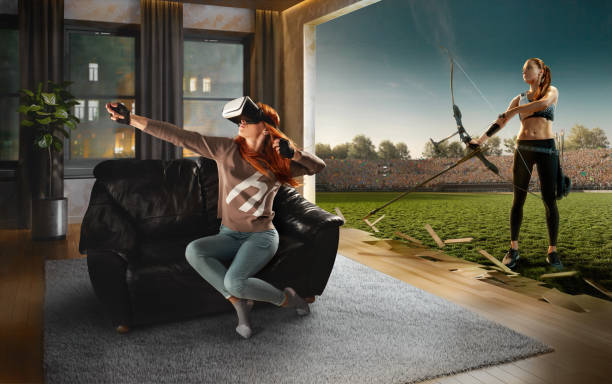Tips To Getting Your Gaming Room VR Ready

Virtual Reality (VR) is a computer-generated simulation with scenes and objects that appear to be real. The simulated experience may be mimicking the real world or an abstract world. You must purchase specific gadgets that facilitate the simulation to access the VR.
VR headsets are the most popular gadget used in these simulations. Depending on the type of headsets you have, you may need to purchase a few extra accessories such as a VR-ready laptop or PC, VR controllers, gloves, and chairs.
These accessories are designed with interactive features to make your VR experience out of this world. However, there are several key things that you need to do to make sure that your gaming room is VR-ready.
Here are five tips to get your gaming room ready for VR.
Spacious Room
The first thing you need to create a VR-ready environment is a spacious room. VR simulations such as games often require you to move parts of your body such as your hands and feet; some simulations may require you to walk around.
If you do not have access to an empty room, make sure to clear up any furniture, rugs, and objects that you may trip on, such as cable wires and the coffee table.
Setup Sensors
Sensors are critical to avoid occlusion or obstruction. Occlusion occurs when one 3D object is blocking another object from view. This is a point of concern for games that require you to find particular placed objects.
Sensors must be diagonally set up at opposing corners of the room. The sensors should preferably be mounted on the wall; if they are too heavy to be mounted using a sticky material, consider placing them on a high surface such as a bookshelf.
Set Up Your PC/Laptop
A VR-ready PC or laptop is simply a computer with sufficient power to run the graphics and the processing requirements of VR headsets while tethered. Although many computer components may have the processing power to run VR games, new technology has started rendering some of them obsolete. And if your gaming PC is lagging, you will want to troubleshoot this for a better experience.
You will need a gaming laptop with specific vital requirements for the smooth running of a VR game on your PC or laptop. These requirements include a graphics card, ports, a processor, and your machine should be running on at least 8GB of RAM.
Standing
You can experience a VR simulation while sitting, standing, or walking around. Consider purchasing an anti-fatigue mat designed for standing tables if you are standing. You can use the edges of the rug to reposition and center yourself once you have begun wandering off into the simulation.
VR Accessories Cables
VR accessories all need to be connected to your PC or laptop. The best option would be to buy accessories that are connectable wirelessly; however, not all VR gadgets have this functionality. Therefore, it is best to clear your desk of any objects that may be swept off your tables, such as coffee mugs, stationery, and desk calendars.
It is without question that your VR simulation experience will be entertaining; however, adding these few things to your checklist can potentially make your experience even more enjoyable.






